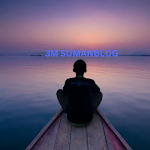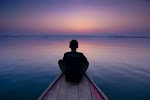Northern Lights Perfect Storm Creates Great Displays Across Minnesota
Introduction:
For those lucky enough to witness them, the Northern Lights, or Aurora Borealis, are one of nature's most mesmerizing spectacles. And in recent days, skygazers across Minnesota have been treated to some truly spectacular displays, thanks to a rare "perfect storm" of conditions that have created ideal viewing conditions for the Northern Lights.
Body:
The Northern Lights are caused by the interaction of electrically charged particles from the sun with particles in the Earth's atmosphere. When these particles collide, they produce beautiful, swirling curtains of light in a range of colors, from green to pink to purple.
But seeing the Northern Lights isn't always easy. The best time to view them is typically in the winter months, when the nights are longer and darker. Even then, however, there are a number of factors that can make it difficult to see the lights, including light pollution from cities, cloud cover, and low solar activity.
That's what makes the current "perfect storm" of conditions so exciting for Northern Lights enthusiasts. Over the past few weeks, a combination of factors has created ideal viewing conditions for the lights. These include:
High solar activity: The sun is currently in an active phase, producing more charged particles that can interact with the Earth's atmosphere.
Clear skies: The weather in Minnesota has been clear and cold, providing excellent viewing conditions for the lights.
Minimal light pollution: Many of the best viewing spots for the Northern Lights in Minnesota are located far from major cities, reducing the impact of light pollution.
As a result of these conditions, skygazers across Minnesota have been treated to some truly breathtaking displays of the Northern Lights. From the shores of Lake Superior to the northern reaches of the state, people have been capturing stunning images and videos of the lights.
If you're hoping to catch a glimpse of the Northern Lights yourself, there are a few things to keep in mind. First and foremost, you'll want to find a location with minimal light pollution. This could be a state park or wilderness area, or simply a rural area away from city lights. You'll also want to check the weather forecast to make sure the skies will be clear.
Once you're in position, be patient. While the Northern Lights can be incredibly bright and intense, they can also be subtle and fleeting. Give yourself plenty of time to watch the sky, and don't be discouraged if you don't see anything right away.
Tips for Photographing the Northern Lights:
If you're hoping to capture some stunning images of the Northern Lights, there are a few tips that can help you get the best shots possible:
Use a tripod: Because the Northern Lights can be quite dim, you'll need a longer exposure time to capture them. This means you'll need to keep your camera steady for several seconds at a time. Using a tripod will help ensure your shots are sharp and in focus.
Use a fast lens: A fast lens (one with a low f-stop number) will let in more light, allowing you to use a shorter exposure time and reduce the risk of blurry shots. A wide-angle lens can also help you capture more of the sky and the surrounding landscape.
Use manual settings: In order to capture the Northern Lights, you'll need to use manual settings on your camera. Start with a shutter speed of around 10-15 seconds, an aperture of f/2.8 or lower, and an ISO of 800-1600. Adjust these settings as needed based on the brightness of the lights and the surrounding environment.
Be patient: As mentioned earlier, the Northern Lights can be subtle and unpredictable. Be patient and give yourself plenty of time to watch the sky. You may need to wait several hours before the lights appear, so be prepared to stay out late.
By following these tips, you'll be well on your way to capturing some truly stunning images of the Northern Lights. Just remember to dress warmly and be prepared for the cold temperatures that often come with winter skygazing in Minnesota.
Conclusion:
The Northern Lights are one of nature's most incredible spectacles, and the recent "perfect storm" of conditions in Minnesota has made them easier to see than ever before. Whether you're an experienced skygazer or a first-time observer, there's never been a better time to head out and witness the magic of the Aurora Borealis. With a little patience and preparation, you could be rewarded with a once-in-a-lifetime experience and some truly unforgettable photos.





0 Comments